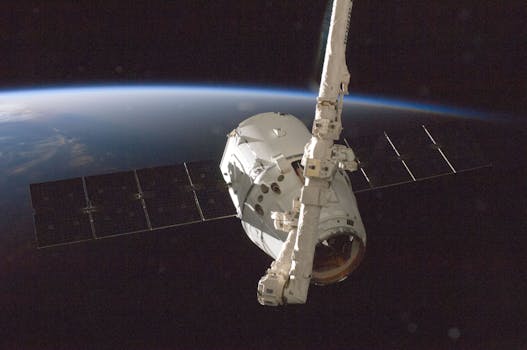
From Geostationary to Low Earth Orbit: The Evolution of Satellite Telecommunications in 2023
The evolution of satellite telecommunications has been a remarkable journey, transforming the way we communicate and access information. In 2023, we are witnessing a significant shift from traditional geostationary satellites to low Earth orbit (LEO) satellites, which promise to revolutionize the industry. In this article, we will delve into the history of satellite telecommunications, the benefits of LEO satellites, and the current state of the industry.
Introduction to Satellite Telecommunications
Satellite telecommunications have been around for decades, with the first commercial satellite, Intelsat 1, launched in 1965. Since then, satellites have played a crucial role in global communications, providing services such as television broadcasting, telephone connections, and internet access. Geostationary satellites, which orbit the Earth at an altitude of approximately 36,000 kilometers, have been the backbone of the industry, offering wide coverage and high-capacity connectivity.
The Benefits of Low Earth Orbit Satellites
However, geostationary satellites have limitations, such as high latency, limited bandwidth, and high operational costs. LEO satellites, which orbit the Earth at an altitude of around 160-2,000 kilometers, offer several advantages. They provide lower latency, typically around 20-30 milliseconds, compared to geostationary satellites, which can have latency of up to 600 milliseconds. LEO satellites also offer higher bandwidth and reduced operational costs, making them an attractive option for modern satellite telecommunications.
One of the primary benefits of LEO satellites is their ability to provide global coverage with a constellation of smaller satellites. This approach enables the creation of a network of interconnected satellites, which can offer seamless and reliable connectivity. Companies such as SpaceX, OneWeb, and Amazon’s Kuiper Systems are already working on deploying LEO satellite constellations, which promise to transform the industry.
Current State of the Industry
In 2023, the satellite telecommunications industry is experiencing a surge in investment and innovation. The development of LEO satellites has attracted significant attention, with several companies launching their own constellations. SpaceX’s Starlink, for example, aims to provide global internet coverage with a constellation of over 40,000 satellites. OneWeb, on the other hand, is working on a constellation of 648 satellites, which will offer high-speed internet connectivity worldwide.
The shift to LEO satellites is also driving innovation in space technology. Companies are developing new launch vehicles, such as reusable rockets, to reduce the cost of accessing space. Advances in satellite manufacturing and design are also enabling the production of smaller, more efficient satellites, which can be launched in larger numbers to create a constellation.
Conclusion
In conclusion, the evolution of satellite telecommunications is undergoing a significant transformation, with a shift from geostationary to low Earth orbit satellites. The benefits of LEO satellites, including lower latency, higher bandwidth, and reduced operational costs, make them an attractive option for modern satellite telecommunications. As the industry continues to innovate and invest in new technologies, we can expect to see significant improvements in global connectivity and access to information.


